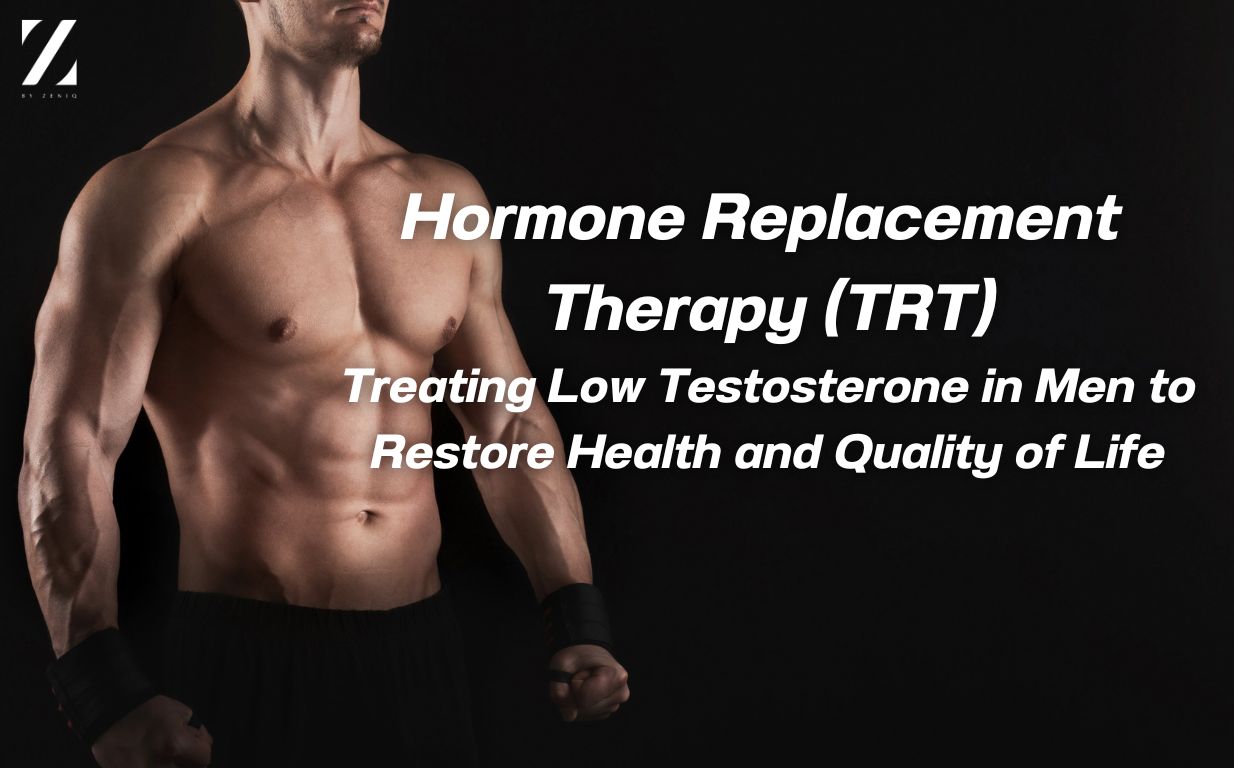Treatment of low hormone levels in men with Testosterone Replacement Therapy (TRT) is another option to increase testosterone levels, or male hormones, which may decrease with age or other factors that affect a man’s health and quality of life.
What is Testosterone Replacement Therapy (TRT)?
Testosterone Replacement Therapy (TRT) is a treatment for men who have low testosterone levels, or hypogonadism. This condition is more common in older men or those with health conditions that affect testosterone production. It can lead to decreased energy, decreased sexual performance, and possible loss of muscle mass. Testosterone replacement therapy is a treatment option for men suffering from low testosterone.
Causes of decreased hormone levels
Low testosterone levels in men can be caused by a number of important factors, including:
- Age: As we age, our bodies tend to produce less testosterone, which is the main reason why some men experience low testosterone.
- Medical conditions: Certain medical conditions, such as diabetes, heart disease, and obesity, can affect the body’s production of hormones.
- Neurological problems: Injuries to the brain or pituitary gland can affect hormone production.
- Psychological and environmental factors: Stress and an imbalanced lifestyle, such as lack of sleep or a poor diet, can lower testosterone levels.
Benefits of Transient Hormone Therapy (TRT)
Testosterone therapy can help relieve symptoms caused by low hormone levels, such as:
- Increased Energy: Men with low testosterone levels may feel fatigued and lacking in energy. TRT can help increase energy and make you feel more energetic.
- Enhanced Sexual Function: TRT can increase sex drive and can help treat erectile dysfunction.
- Increased Muscle Mass and Strength: Testosterone plays a key role in building muscle and bone. TRT can help increase muscle mass and improve physical strength.
- Relieves Depression and Anxiety: Increasing testosterone levels can help relieve feelings of sadness and anxiety.
Methods and modalities of hormone therapy
There are several methods of testosterone therapy, depending on the convenience and needs of the patient, as follows:
- Injections: Injecting testosterone directly into the body is a popular method, which can be done every 1-2 weeks.
- Gels or creams: Applying a testosterone gel or cream to the skin can help increase the body’s hormone levels. The gel is applied to the area of the skin where the body can absorb the hormone most effectively.
- Patches: A patch that releases testosterone slowly and continuously. This patch can be placed on the skin in an area recommended by your doctor to help the body absorb the hormone most effectively.
- Oral medications: For those who are not comfortable with other methods, taking testosterone pills is another option that can help increase hormone levels.
Pros and Cons of Testosterone Therapy (TRT)
Hormone therapy has advantages and disadvantages that patients should consider before making a decision:
- Benefits: Testosterone therapy can help increase energy, sexual interest, and muscle mass, as well as improve mental health and reduce depression.
- Disadvantages: Despite its many benefits, TRT can have side effects, such as increased risk of heart disease, prostate cancer, or fluid retention in the body. It can also decrease the body’s production of testosterone if treatment is stopped without medical advice.
Choosing Transient Hormone Therapy (TRT)
Testosterone therapy is not for everyone. Those with a history of prostate cancer or heart problems should undergo a health screening and evaluation with a healthcare professional before beginning treatment to determine appropriateness for continued treatment.
Monitoring and improving treatment outcomes
Ongoing monitoring is important in treating patients on TRT, with regular blood tests to monitor hormone levels and response to treatment, as well as to tailor treatment to the symptoms and potential side effects.
summary
Testosterone Replacement Therapy (TRT) is an effective treatment for increasing testosterone levels in the body. It can help relieve symptoms associated with low testosterone, such as increased energy, increased interest and sexual performance, and increased muscle mass. However, this treatment has advantages and disadvantages that should be carefully considered. Before deciding to use TRT, it is important to seek advice from a doctor and follow up on the treatment results continuously to get the best and safest results.

